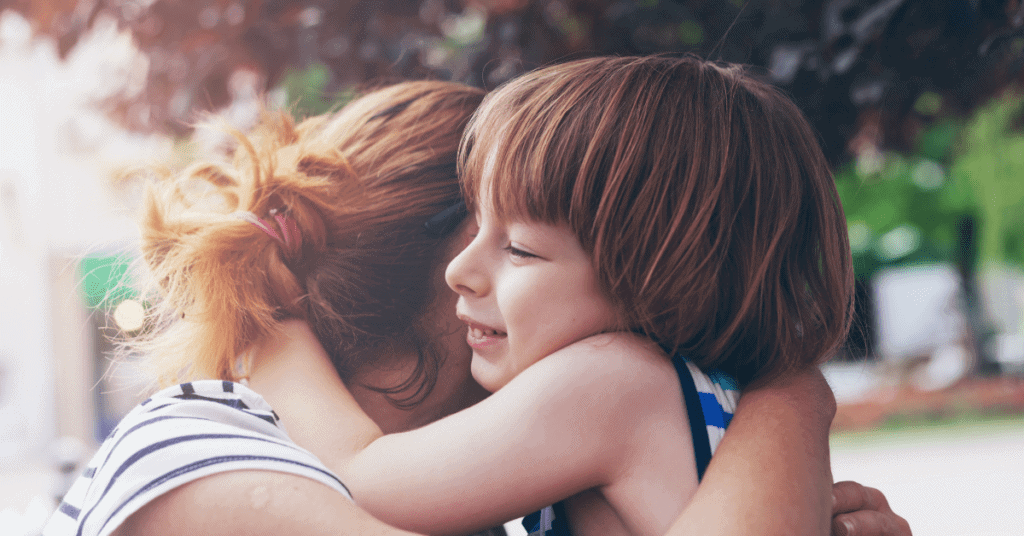Maariya Arshad, mental health expert, shares her top tips to help little kids manage their big emotions.
Little children have BIG emotions and they don’t have the words to describe them or the experience to understand them. As every parent who has seen their child have a tantrum or be overwhelmed by anger or fear will know!
When your child is crying a lot or having a lot of anger outbursts it can feel pretty overwhelming for you as a parent too. But how we respond can make a big difference.
Teaching our children Emotional Intelligence
Teaching our children Emotional Intelligence (EQ) is all about helping them to deal with and express their emotions in healthy ways. When it comes to our children, being emotionally intelligent affects:
- How the communicate
- The way they socialise
- How they control their own emotions
- Their ability to adjust to change
- How they make decisions
- The way they see their own self-image and self-worth
By teaching our children how to be emotionally intelligent at a young age, we’re setting them up for success in almost every area of their lives! Helping kids learn how to manage their emotions can truly help them to shape their future!
The 8 big emotions little children have

We all know that little kids have big emotions. All children have 8 primary in-built emotions. Primary emotions are those emotions that all children experience without being taught about them; these are:
– anger
– sadness
– fear
– joy
– interest
– surprise
– disgust
– shame
8 ways to help your little child manage their BIG emotions
1. Label the emotion
There are 2 easy techniques for teaching your child to label emotions.
1) When your child is crying, you could say: “I know you’re sad.” Or if they’re scared, you could say: “Are you feeling scared?” Or when they’re happy you can say “You’re so happy!”
2) When you’re watching TV or out in public, and you see somebody showing emotion: acknowledge it. If someone is crying you can say: “they are very sad” and the same for scared, happy etc.
Overtime your child will be able to identify these emotions for themselves, which is the first step before they can verbally communicate their feelings with you. As they get older, you can start bringing in a greater range of emotions.
2. Validate their feelings
It’s always useful to note that often when a child feels indifferent towards a situation, they won’t say anything, but when they’re feeling a strong emotion, that’s when they will tell you about it.
So if they have told you something is “unfair” draw on your own experiences of when you have felt something is unfair, and feel that with them. You can do the same for when they are happy, excited, sad etc. This is also a great way of validating their feelings and developing a stronger relationship with your child.
3. “Use your words”

When children are starting to get frustrated, they will often show this through their non-verbal behaviours (certain noises and actions). So if your child is at the stage where they are starting to speak, encourage them to “use their words”. This technique:
– redirects their attention and focus away from the overwhelming feeling
– teaches them an alternative, healthy way of expressing their emotions
– helps with their language development
– overtime it makes it easier for you to respond to their needs, because they are able to tell you, so less guesswork will be involved.
4. Create a quiet place to help kids manage big emotions
Have a quiet place they can go to when they need to calm down. This isn’t the same as a naughty corner. This space is specifically for the purpose of teaching them to deal with their intense feelings. It can be a chair at the dining table, the corner of a sofa, anywhere that can be quiet and calming.
In this space, think about bringing in some techniques that might help them calm down. For a toddler, you might want to teach them breathing exercises, e.g. breathe in for 4 seconds and breathe out for 6 seconds – repeat this 6-10 times. You could put out cards that show images of different emotions, and ask them to let you know how they feel by holding up one of the cards. You could even have soft play toys that they could use as a stress ball.
This is a technique they can use into adulthood, where when they’re overwhelmed, they can take themselves away from the situation, and employ healthy coping strategies.
5. Make a safe space to talk and help kids manage their emotions

Create opportunities in your day/week where your child can speak to you about anything they are thinking and feeling. You could do this as a family at dinner time, or spend 5-10 minutes every day or a few times a week with each child on a 1:1 basis where you ask them to tell you things they like, dislike, feel, etc.
When you first begin this practice, they may not be able to fully verbalise their thoughts. But that’s okay. Use this time to turn this practice into a habit, and overtime you will have developed a stronger relationship with your child, because they’ll start to see this 1:1 time with you as their own “safe space”. After a while, it will become easier for you to identify areas of their life they may emotionally be struggling with.
6. Model big feelings that little kids have
Children learn a lot more from how we behave and respond, than from what we say. Use this as an opportunity to develop your own emotional intelligence. Be honest with yourself about how you are when it comes to:
– identifying your emotions
– managing your emotions
– how you express your happiness, sadness, anger and frustration
If there are any areas that may need some work, take steps to start working on these, so that you can then model emotional intelligence to your child.
7. Each kid is different and need help to manage their emotions in different ways
Keep an eye out for specific things when it comes to your child:
– what are my child’s triggers?
– what makes my child feel better?
– does my child need to be informed when a change is coming?
– are there certain sounds, textures, toys or people my child likes/dislikes?
Observing these things can help you to settle your child at difficult moments in a calm and stress-free way. Also, remember that if you have more than one child, the answers to these questions are likely to be different for each child, and the answers may also change as your child grows and develops.
8. BIG feelings that little kids have: managing tantrums

When a child is experiencing a tantrum, they’re feeling very overwhelmed, and in that moment they are struggling, emotionally and physically, to handle what they are feeling. Where possible, try to identify the early signs of overwhelm before it occurs and use some of the techniques mentioned above. However, if in this moment we have passed the point of rationalising and teaching, and our child is in the middle of a tantrum; it may be best focus on protecting their physical safety.
Intervene if your child’s tantrum is causing physical harm to themselves or anyone else. However, if they are safe, observe their tantrum from a safe distance. As soon as the tantrum has passed its peak, you will notice that your child gradually begins to show signs of calming down; even if that shift is a subtle one. This will be your cue that within the next few moments your child will be receptive to you intervening again.
It’s normal for little kids to have big emotions
Remember that even despite your best efforts, sometimes toddlers will still respond in explosive ways. This is perfectly normal, and know that the work that you’re putting in will help to minimise how long the tantrums last, and reduce how explosive they might be.
Best of luck on your parenting journey!
Maariya
You can find more parenting tips as well as advice and support for mental health, productivity and lifestyle advice from Maariya in her You Tube Channel – Insightology.
For tips on how to help your child through the pandemic read our advice from a clinical psychologist.
Read more:
Parenting in the pandemic: the impact on new mothers
Top teething tips – the best ways to soothe your teething baby



0 Comments